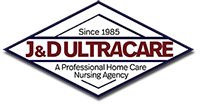By J&D Ultracare
By J&D Ultracare
By J&D Ultracare
By J&D Ultracare
By J&D Ultracare
By J&D Ultracare
Since 1985, J&D Ultracare has been providing skilled nursing services to the medically fragile population of the New York Metropolitan area as well as the greater Hudson Valley. We see clients in Rockland, Dutchess, Putnam County, Westchester, Sullivan, Ulster, and Orange Counties.
In addition to delivering highly specialized care to patients, the Agency also provides the training and support needed to keep families intact and as independent as possible in caring for their loved ones.
